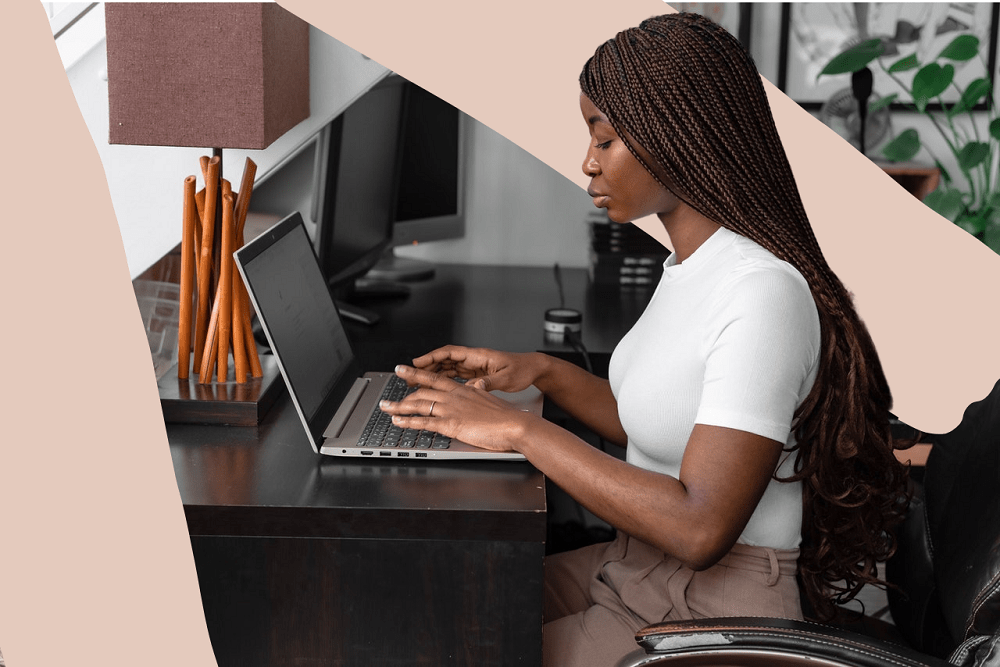Hey, you! Stop squinting into the screen, shoulders hunched, neck crooked. Lean back into your chair a little, straighten your back, adjust your wrists to rest comfortably on your desk…
Nope, we haven’t hacked your webcam. But rather, we’re putting our trust in probability; according to the physical therapist and spokesperson for the American Physical Therapy Association, Eric Robertson via CNBC, ‘’the pandemic…led to an increase in common, musculoskeletal back and neck pain’’, and this is largely down to the unergonomic nature of our home working setups.
This is backed (ahem) up by several recent studies, with one suggesting that neck pain had worsened in a whopping 50% of home workers over the course of the COVID-19 crisis.
You’d think that our return to the central office space would have fixed this. But with many now operating under a ‘hybrid’ working model, spending a portion of the week in the office and some of the time working from home, a proclivity for back pain may even have increased.
Think about it; one minute you’re hunched over your hastily arranged ironing board desk, the next you’re leaning back in the office chair you haven’t sat in for a couple of years…all this chopping and changing can’t be good for your posture, your back, your neck or your shoulders. Regardless of where you’re working or where’s hurting, here’s how to banish bad posture and prevent back injury when at your desk.
Ask For Ergonomic Equipment, Whether At Home Or In The Office
Putting your health first is vital, and this should be the case whether you’re working from home, at the central office, or doing your thing in a hybrid, flexitime way.
As such, don’t be afraid to ask for ergonomic equipment to equip your desk set-up correctly and ensure you’re maintaining good posture while sitting at your computer.
The responsibility for good posture doesn’t start and end with you; it’s also the responsibility of your employer, even if you’re still working from home.
So, request a chiropractor approved ergonomic chair, complete with headrest, wire mesh for breathability, lumbar support, adjustable height, armrests, knee support…the works. Go further and ensure your desk is kitted out (on your employer’s budget) with an adjustable monitor, which you can place at the correct eye level, and an ergonomic mouse that provides wrist support for an even better experience. A headset, if you use the phone a lot, will also help you address postural problems. Your employers should be only too keen to oblige.
Read: 4 ways to improve your posture in the office

Reduce Stress
Reducing stress is one of the best ways of being able to improve your workplace health, and accordingly, your posture. When we’re stressed out and anxious, tension occurs in our neck and shoulders, an automatic, reflex reaction that’s all part of our stress response (often referred to as ‘fight or flight’).
To avoid this tension and to prevent it from becoming a more serious injury, it’s first best to avoid stress in the workplace altogether. Easier said than done, we understand. Should you feel particular stress related tension, a few stretches can help, too…
Warm Up Before & Warm Down After Work
Sitting up straight and doing some healthy stretches (both warming up and down, pre and post work) can relieve the pain incurred from a day of hunching and squinting, and can improve the consequential headaches and fatigue that prolonged bad posture can create.
Check out this dedicated guide to the best stretches you can do after a day in the office.
Work Hard On Perfecting Your Posture
Whether working at your kitchen table, from your sofa (just don’t) or from a more ergonomically sound central office space, there are small adjustments you can implement to help your posture.
Ensure your bottom is as far back in your chair as it can be and that your monitor is at eye level. Otherwise, you’ll be straining to see your screen, leaning in, hunching your shoulders, and generally doing yourself no favours at all.
If your desk is too low for this, use a couple of books or board games (if you’re at home) or an adjustable monitor (if you’re at the office) to raise the height of your laptop/monitor to eye level.
Ensure your knees are at a 90 degree vertical bend; you might need to rest your feet on a cushion to do this. To create better lumbar support, roll up a towel or use a small cushion and place it in the small of your back.

Take Regular Screen Breaks To Avoid Tech Neck & Digital Eye Strain
Between laptops and smartphones merging the worlds of life and work, a lack of physical exercise is another cause of what has been coined as ‘tech-neck’. However, the remedy is surprisingly simple; regularly step away from your computer, even if it’s just for a stroll around your house or a trip to the office water dispenser for a gossip and a stretch of your legs.
Also, try to work near a window to get some natural sunlight, making your workstation a happier place to spend time. Make sure you manage the light just right to prevent digital eye strain wherever possible.
Read: The importance of taking regular screen breaks explained
Incorporate ‘Movement Variety’ Into Your Routine
Speaking of taking brief stroll breaks throughout the day, the concept of ‘movement variety’ is becoming increasingly recognised as essential for physical workplace well-being, especially in a post-pandemic world where we may be less active. Instead of remaining static, even in a well-set-up ergonomic environment, it’s beneficial to change your position regularly. This could mean switching between sitting and standing with an adjustable desk, using a balance ball chair for part of the day, or incorporating a short walk or stretching session into your routine every hour. This variety helps to engage different muscle groups, reduce muscle fatigue, and improve circulation, all of which contribute to better posture and reduced pain.
Embrace Technology For Posture Monitoring
In this digital age, there’s an app or device for nearly everything, including posture. Consider incorporating posture monitoring technology into your daily routine. Wearable tech, such as smartwatches and posture-correcting devices, can alert you when you’re slouching and track your posture over time.
Additionally, there are numerous apps available that can remind you to adjust your position and even guide you through exercises designed to strengthen your posture.
Here are a few that you might find useful:
- Upright GO: This app works with a wearable device that you place on your back. The device vibrates to alert you when you’re slouching, encouraging you to sit or stand up straight. The app tracks your posture and provides progress reports.
- Posture Reminder: As the name suggests, this app sends you reminders to check and correct your posture at intervals you can set yourself. It’s a simple solution that doesn’t require any additional hardware.
- Stand Up! The Work Break Timer: This app is a timer that reminds you to stand up and take breaks from sitting, which can help reduce the strain on your back and improve your posture over time.
- Stretchly: Stretchly is a cross-platform open-source app that reminds you to take breaks and guides you through stretching exercises, which can help improve your posture and reduce the risk of repetitive strain injuries.

Mindfulness & Posture Connection
Mindfulness has surged in popularity as a method to combat the stress and anxiety heightened by the pandemic. Though the pandemic is now largely over, that bloody anxiety remains.
Mindfulness is not just a tool for mental health, of course; it can also be applied to improve physical health, including posture. By practising mindfulness at work, you can develop a greater awareness of your body and how you hold it. Simple mindfulness exercises can be done at your desk, such as taking a moment to focus on your body’s alignment, breathing deeply, and consciously relaxing any tension in your muscles. This practice not only reduces stress but also encourages you to correct your posture throughout the day naturally.
The Bottom Line
In the ever-evolving landscape of our work environments, particularly in the wake of the pandemic, it’s clear that maintaining good posture is not just a matter of discipline but a multifaceted approach that embraces technology, movement variety, and mindfulness. As we navigate the hybrid working models that blend home and office settings, it’s crucial to invest in ergonomic setups and be proactive in our posture practices.
Responsible employers and employees alike must recognise the importance of this investment — not just for immediate comfort but for long-term health and productivity. By incorporating these strategies and staying vigilant about our habits, we can protect our bodies from the strains of modern work life and ensure that we’re not just surviving our workdays, but thriving through them.





